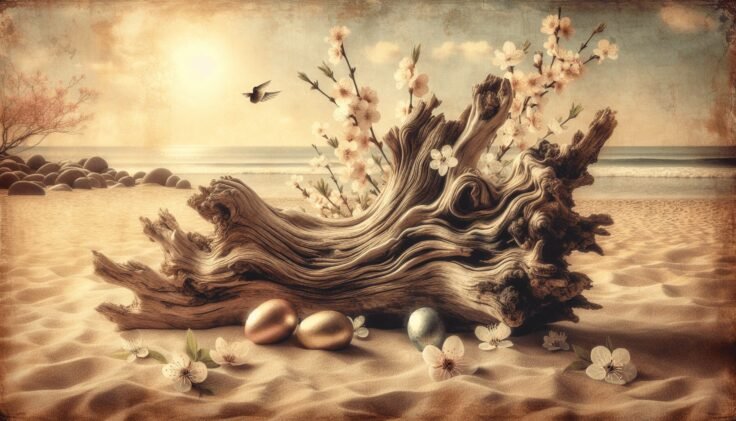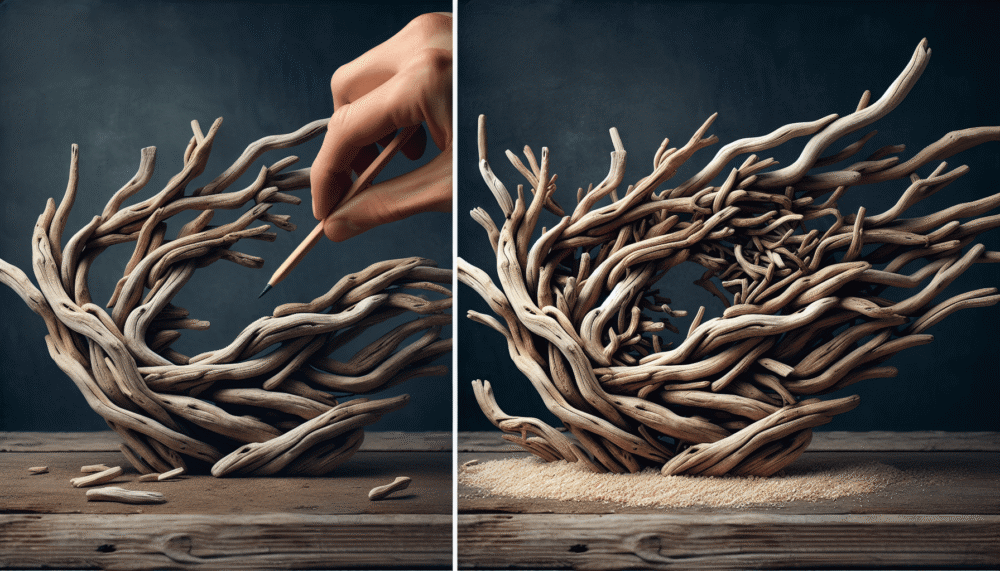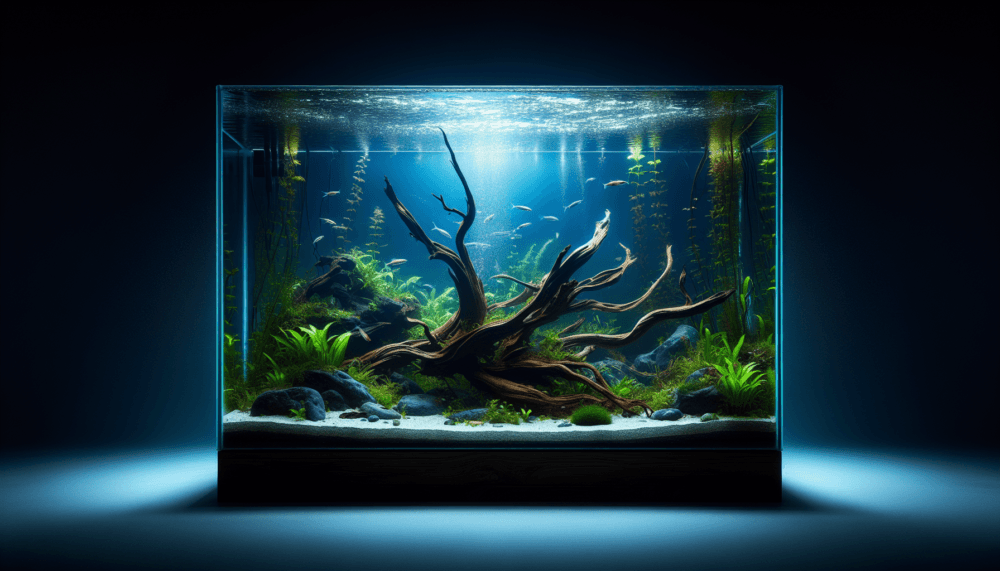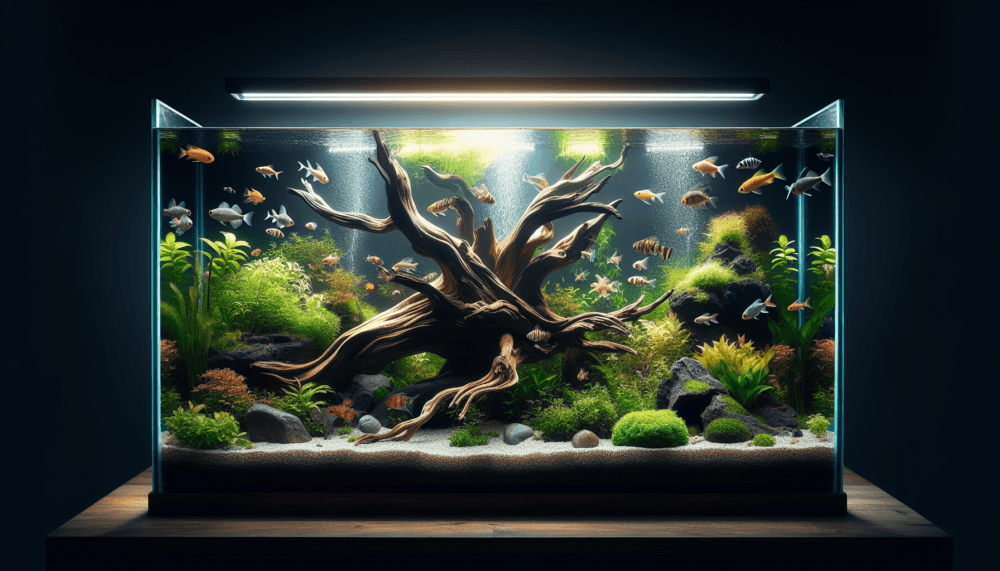Have you ever found yourself captivated by the beauty of plants and wished you could bring a piece of nature’s charm into your home in a unique way? Imagine combining the elegance of kokedama with the rustic appeal of driftwood. This combination offers a striking and artistic way to enjoy indoor gardening. Let’s explore how you can craft your own kokedama on driftwood, marrying two elements of nature to create a visually stunning piece for your home or office.
What is Kokedama?
Kokedama, often referred to as the “poor man’s bonsai,” is a Japanese garden art form that involves a plant growing from a ball of soil covered in moss. The term “kokedama” translates to “moss ball” in English. Kokedama offers a minimalist yet striking way to display plants, often by suspending them in the air or placing them in containers. This art form is centuries old and is gaining popularity worldwide for its simplicity and elegance.
The Art and History Behind Kokedama
Kokedama originated from the Nearai method of bonsai. Nearai involves creating a root system in a compact ball, allowing the plant to grow within its natural, minimalist aesthetic. This technique delighted Japanese gardeners who cherished the beauty of simplicity and natural forms. As you embark on creating your kokedama, you’re participating in a rich tradition that marries horticulture and artistry.
Why Choose Kokedama?
Kokedama is an ideal choice for those who appreciate unique and artistic plant displays. Unlike traditional potted plants, kokedama provides a 360-degree view so you can appreciate the plant from all angles. This living art form requires relatively minimal materials and can be tailored to fit your personal style, making it an excellent option for creative expression.
Why Add Driftwood?
Driftwood refers to timber that has been washed onto the shore by the tides. Each piece tells a unique story of its journey through water and wind. Incorporating driftwood into your kokedama creation not only adds a natural, sculptural element but also enhances the aesthetic, providing a contrast between the vibrant greenery and the aged, detailed structure of the wood.
The Unique Aesthetic of Driftwood
Driftwood adds an organic and somewhat mystical quality to any art piece. Its weathered appearance and unique shapes serve as natural sculptures and can enhance the visual appeal of your kokedama. Each piece of driftwood is unique, offering endless possibilities for creative expression.
Sustainability and Driftwood
Using driftwood in your designs can also be an environmentally friendly choice. Since driftwood has naturally washed ashore, utilizing it doesn’t contribute to deforestation. Instead, it repurposes materials that nature has already shaped and abandoned. This practice aligns with a sustainable approach to indoor gardening and design.
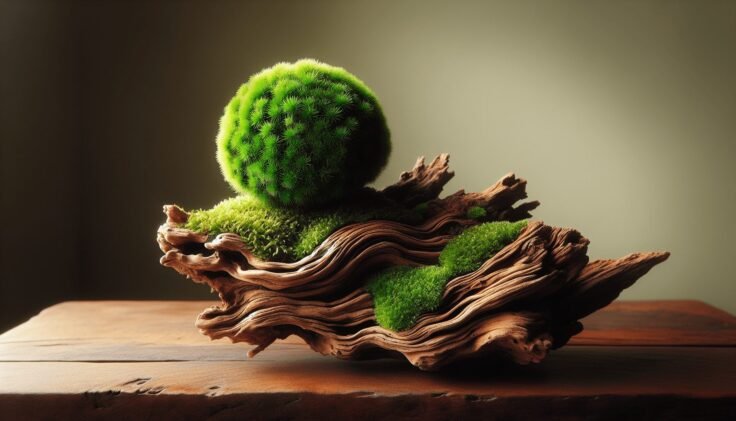
Creating Your Kokedama on Driftwood
Now that we understand the beauty and history behind kokedama and driftwood, let’s dive into how you can create your own kokedama on driftwood. The process involves gathering the right materials, choosing the suitable plants, and carefully constructing your piece. Here’s how:
Materials You Will Need
Creating kokedama on driftwood doesn’t require a lot of tools, but there are specific materials you will need to ensure the success and longevity of your plant. Here’s a list:
| Materials | Purpose |
|---|---|
| Plant of choice | The star of your kokedama |
| Moss | Covering and holding the soil ball together |
| Driftwood | Base for mounting your kokedama |
| Bonsai soil mix | Provides structure and nutrients to plant |
| String or twine | Secures the moss around the soil |
| Scissors | Cutting string and shaping moss |
| Water spray bottle | For moistening the moss during assembly |
| Gloves (optional) | Protecting your hands during the process |
Selecting the Right Plant
Not every plant is suitable for kokedama. Choose plants that thrive in high-humidity environments and have relatively small root systems. Popular options include ferns, pothos, ivy, and orchids. Consider the lighting conditions in your home and choose plants that will thrive in your specific environment.
Preparing the Soil and Moss
Combine a mixture of bonsai soil and water until it forms a clay-like consistency. Mold the soil around the roots of your plant to create a ball. Ensure the ball is compact and firm before proceeding.
Next, soak the moss in water for a few minutes to make it pliable. Squeeze out excess water and lay the moss on a flat surface. Wrap the moss around the soil ball, making sure it is completely covered.
Assembly Instructions
- Mounting the Soil Ball: Secure the moss around the soil ball using string or twine. Wrap it tightly to ensure stability without damaging the roots of the plant.
- Attaching to the Driftwood: Find a flat surface on the driftwood to mount your kokedama. Use additional string to tie the moss ball securely to the driftwood. Choose a binding method that complements the natural lines of the wood for aesthetic harmony.
- Final Placement and Adjustments: Once secure, adjust the plant and moss for optimal presentation. Use scissors to trim any excess string or stray pieces of moss. Ensure that the kokedama is balanced and stable on the driftwood.
Caring for Your Kokedama on Driftwood
Now that you’ve created your unique art piece, maintaining its beauty involves regular care and attention. Here are some tips for keeping your kokedama healthy and vibrant.
Watering
The key to a thriving kokedama is maintaining the right moisture level in the moss ball. Depending on your plant choice and environmental conditions, this could mean watering once or twice a week.
- Watering Method: Submerge the kokedama (plant side up) into a bowl of water until fully saturated. Allow excess water to drip off before replacing.
Light Requirements
Ensure that your kokedama receives appropriate sunlight for the specific plant type. Most kokedama plants prefer indirect sunlight. Too much direct sunlight could dry out the moss, while too little could hinder plant growth.
Humidity and Temperature
Maintain a humid environment to keep the moss lush. If your home is particularly dry, consider misting your kokedama regularly or using a humidifier. Keep your plant away from drafts or direct heat sources that could dry out or stress the plant.
Regular Trimming
Trim any yellowing or browning leaves to encourage healthy growth. Keep an eye on any overgrowth that might unbalance the kokedama, and use scissors to carefully prune as needed.
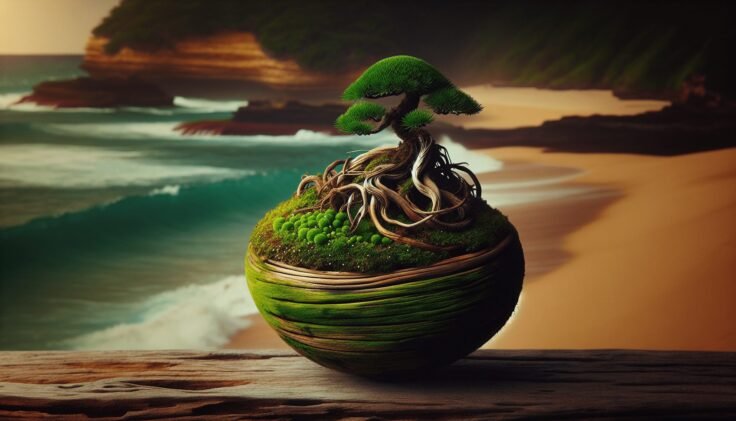
Benefits of Kokedama on Driftwood
Combining kokedama with driftwood not only creates an eye-catching display but also brings several benefits, from enhancing your living space to improving your well-being.
Artistic Expression
Crafting kokedama on driftwood provides you with a creative outlet. The distinct characteristics of each driftwood piece, combined with various plant types, allow for infinite artistic possibilities.
Enhanced Indoor Air Quality
Plants are natural air purifiers. By incorporating kokedama into your home, you benefit from improved air quality as the plant absorbs carbon dioxide and releases oxygen.
Low Maintenance
Once established, kokedama on driftwood requires less maintenance than traditional houseplants as long as you stay on top of watering and light needs.
Connection to Nature
Having a piece of nature in your space can bring peace and mindfulness. Observing your kokedama grow and change over time fosters a deeper connection with nature and can lead to a greater sense of appreciation for life’s simple pleasures.
Troubleshooting Common Issues
While kokedama is generally straightforward, sometimes challenges may arise. Here are some solutions to common issues you might encounter:
Moss Drying Out
If you notice the moss drying out quickly, it may need more frequent watering. Ensure you submerge the kokedama entirely and consider misting it in addition to regular watering.
Yellowing Leaves
Yellow leaves can be a sign of overwatering, inadequate light, or nutrient deficiencies. Adjust your watering schedule accordingly and ensure the plant is receiving sufficient but indirect sunlight.
Weak Attachment to Driftwood
Should your kokedama become loose on the driftwood, resecure it with additional string. Place extra moss or padding if the driftwood surface isn’t providing adequate support.
Overgrowing Roots
If the roots begin to overgrow the ball, you may need to trim them back slightly or recreate the moss ball with fresh soil and moss to accommodate the expanded root system.
Conclusion
Crafting kokedama on driftwood offers a beautiful way to connect with nature and embrace an ancient art form within your modern home. This combination allows you to create a unique, living sculpture that not only decorates but invigorates your space with natural beauty. By understanding the steps and care involved, you can enjoy the artistic process and the simple joys of plant care. Embrace this creative challenge, and you will have a stunning, natural masterpiece that brings tranquility and elegance to any room.
